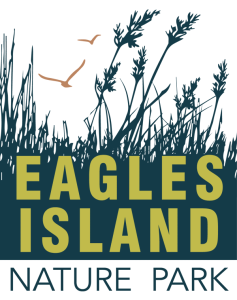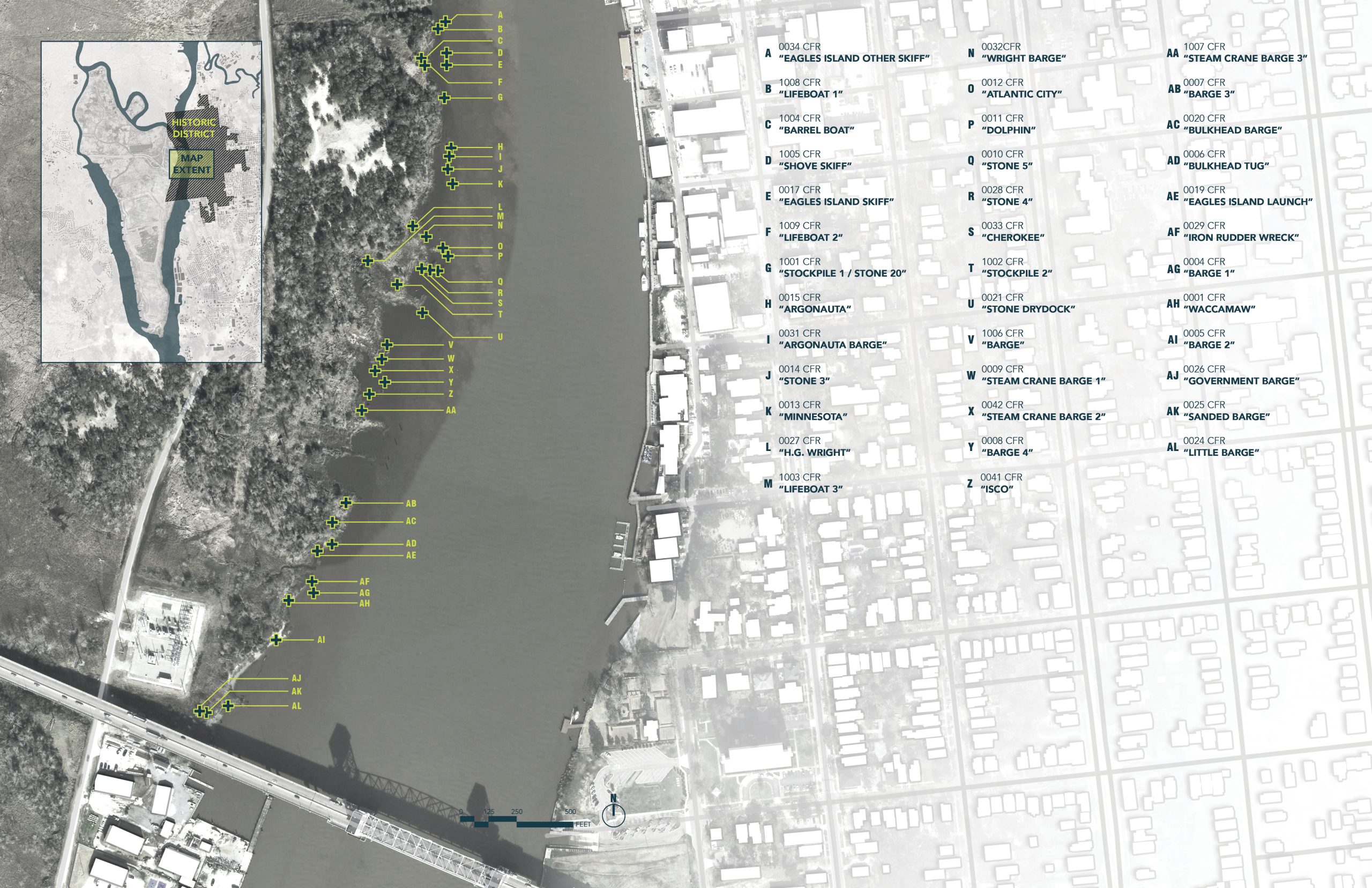The stern-wheeler A.P. Hurt docked at the location where it sunk during a storm in 1910. It is lying on its side between Orange and Dock Streets, with most of the superstructure gone. Its interior and engine are still intact. The A.P. Hurt is one of more than a dozen shipwrecks in Wilmington Harbor, with the majority sunk on the eastern shoreline of Eagles Island.
Eagles Island Ships Graveyard
Remnants of Eagles Island’s booming industrial history are still visible along its eastern shoreline today. Piers and other remains of wharves dot the waters edge intermixed with sunken abandoned vessels, contributing to what is known as the Eagles Island Ship Graveyard. According to a 1985 report prepared on the underwater archaeological sites in the Wilmington historic district, “the extensive collection of lost and abandoned vessels located along the Wilmington waterfront is unique in North Carolina. No other port or body of water in the State contains such a concentrated number of relatively intact shipwreck sites” (Lawrence, 1985). Thirty-seven wrecks or abandoned vessels are along the Eagles Island shoreline. Two wrecks, including the A.P. Hurt, are sunk at the foot of Dock and Orange Street in 20 feet of water
Extensive mapping and documentation, most recently updated in 2006 (Seeb), of the abandoned vessels has provided an important archaeological record of Wilmington’s industrial past. In the mid-1980s, the Eagles Island Ship Graveyard was incorporated into the Wilmington Historic District’s designation on the National Register of Historic Places and is now referred to as the Wilmington Historic Shipwreck District. The submerged vessels are also protected by the 1988 Abandoned Shipwreck Act and North Carolina’s Archaeological Resources Protection Act.
Locations and identification of vessel remains in this exhibit were adapted from 2006 research and mapping efforts by Sami Seeb. You can review Ms. Seeb’s research here.
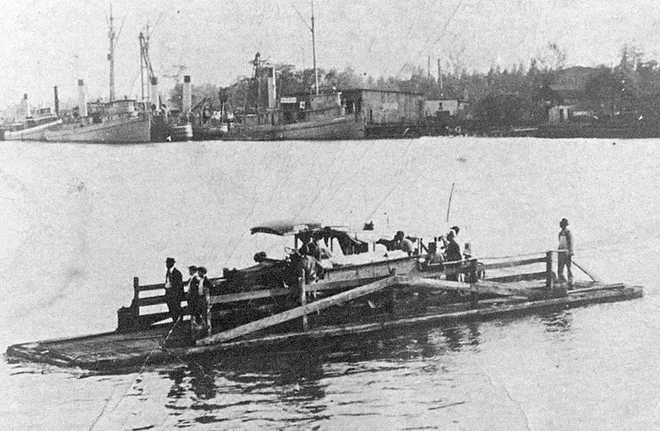
Towed Ferry
A ferry ran from a ramp at the end of Market Street to a causeway on Eagles Island that crossed over to the island to the Brunwick River. The first ferries were pulled by small oared boats, and later by powered boats. The ferryboat dock is still visible next to the Battleship North Carolina waterfront park.
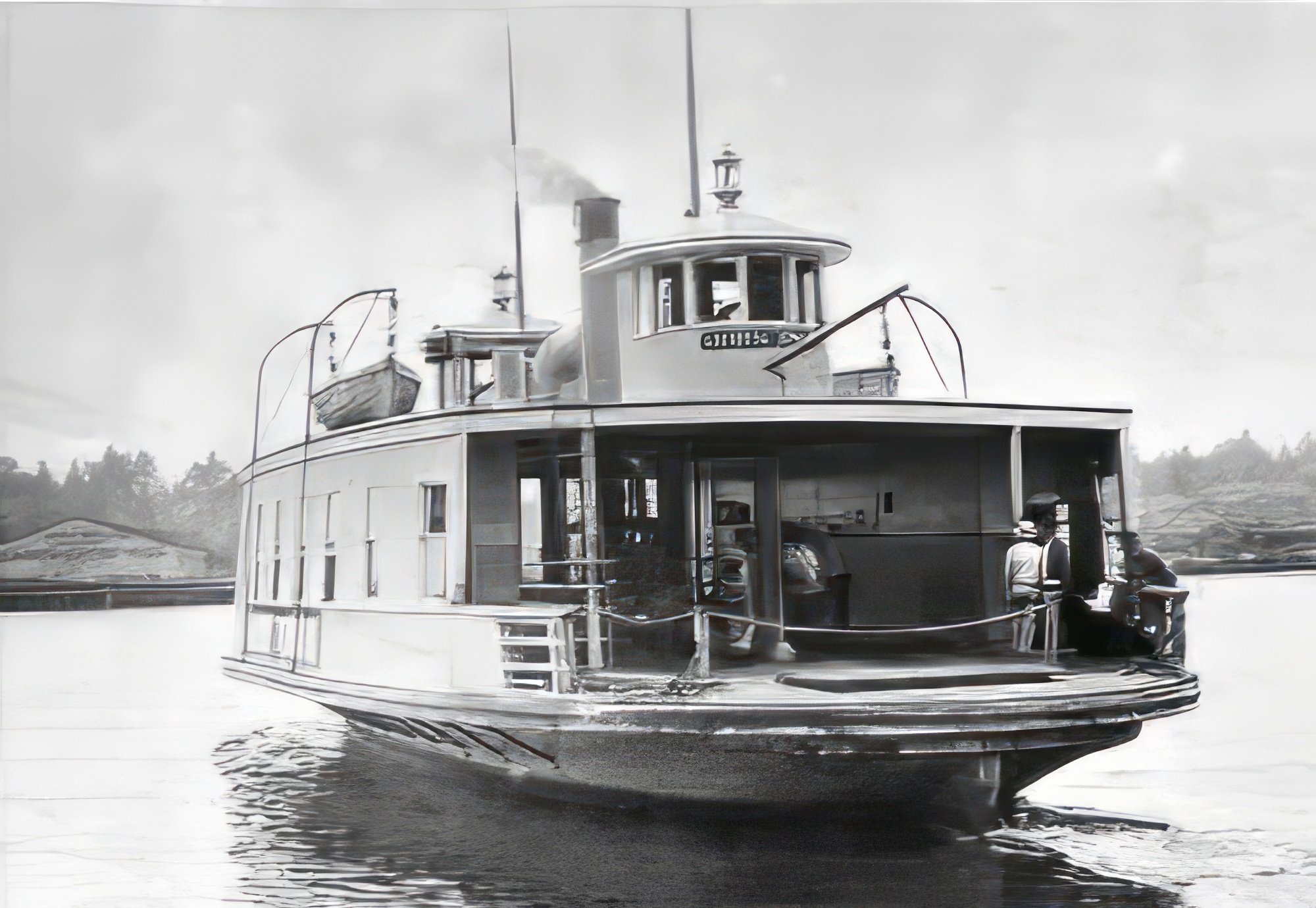
John Knox Ferry
The 80-foot John Knox Ferry began transporting passengers and vehicles in 1930 and remained in operation. In 1929 the Twin Toll Bridges were build across the Cape Fear River. The John Knox made its last crossing in 1935. Shortly after the ship struck a piling in a storm and sank. Her remains are sunk just off the shoreline of Eagles Island directly across from Dock Street.
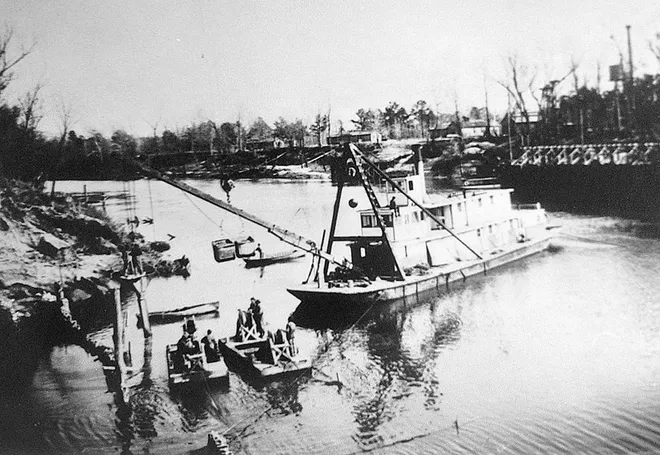
H.G. Wright
The H.G. Wright was a steam sternwheeler used to clear Cape Fear River tributaries from floating logs and other obstructions. The ships remains are in the old Stone Shipyard. Its side wheel paddles are in the N.C. Transportation Museum in Fayetteville.
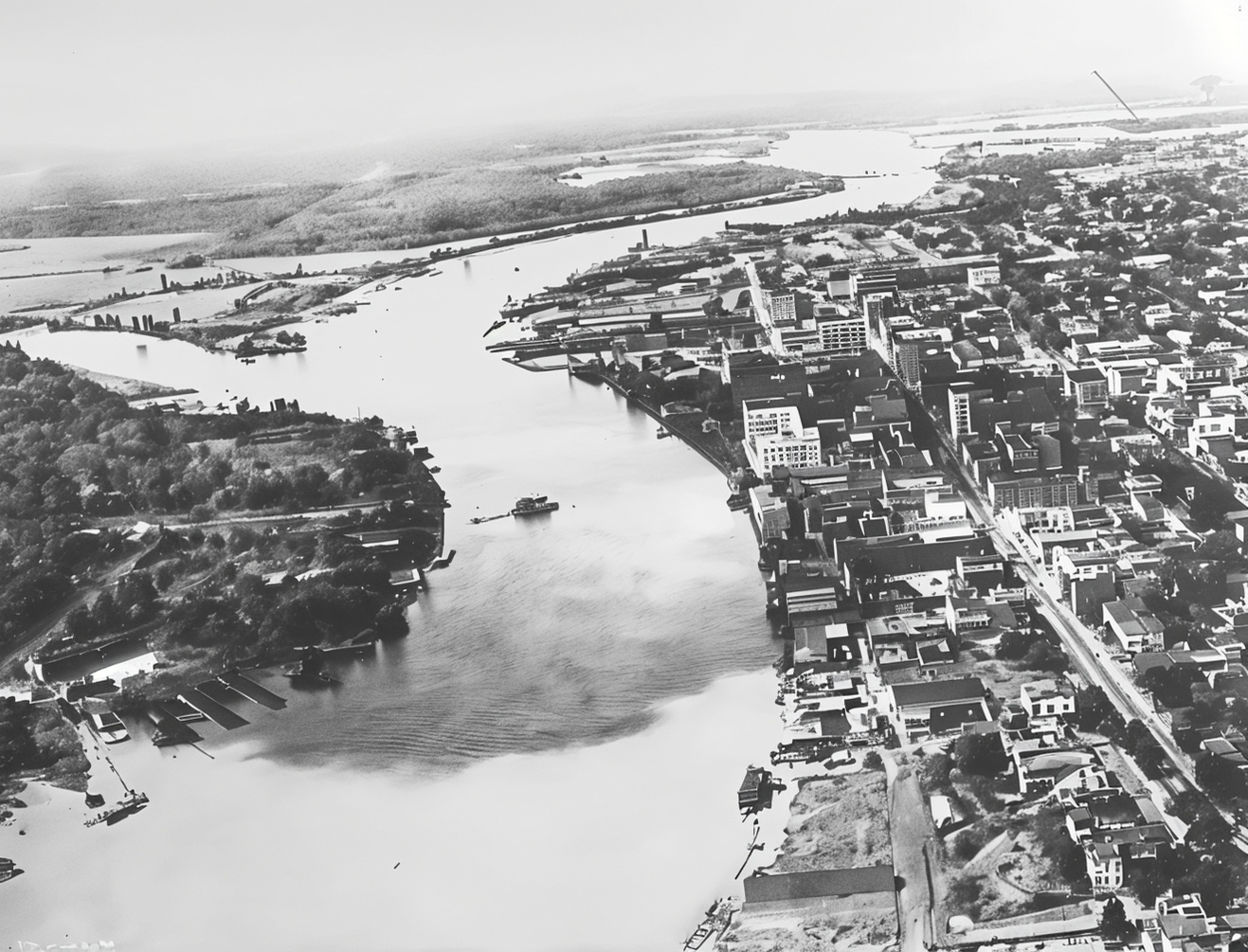
Stone Shipyard
The Stone Shipyard is in the lower left of this undated photo (circa 1920s). Originally the site was the Beery Shipyard that built the Civil War blockade runner, the CSS North Carolina. The shipyard included two railways used to haul ships of out the water and one floating dry dock for repairs.

Waccamaw, aka USS Commodore Hull
The Waccamawl, a side wheel ferry, was built in 1860 at New York as the ferry boat Nuestra Senora de Regla for use in Cuba. The boat was purchased by the Union Navy in September 1862, fitted out as a gunboat, and commissioned as the USS Commodore Hull. After the war she was sold to a shipping firm in Wilmington, renamed the Waccamaw, and served as a ferry boat beween Wilmington and Southport. In 1895 she caught fire at a dock on Eagles Island. Her remains are adjacent to the Duke Power substation next to the Cape Fear Memorial Bridge.
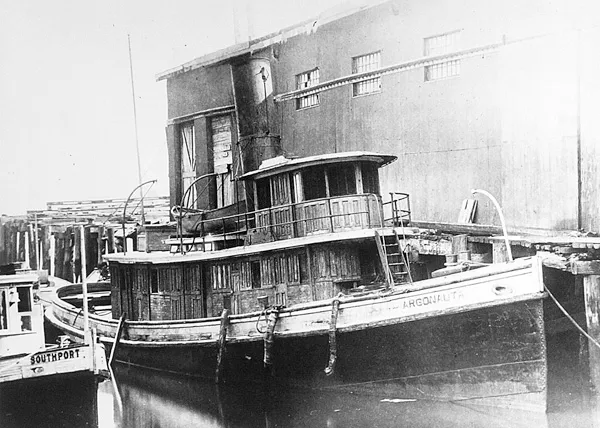
Argonauta Tugboat
The Argonauta was an iron-hull, steam-powered screw tugboat built in Camden, NJ, in 1876. It’s abandoned remains are just north of the of the old Stone Shipyard.
